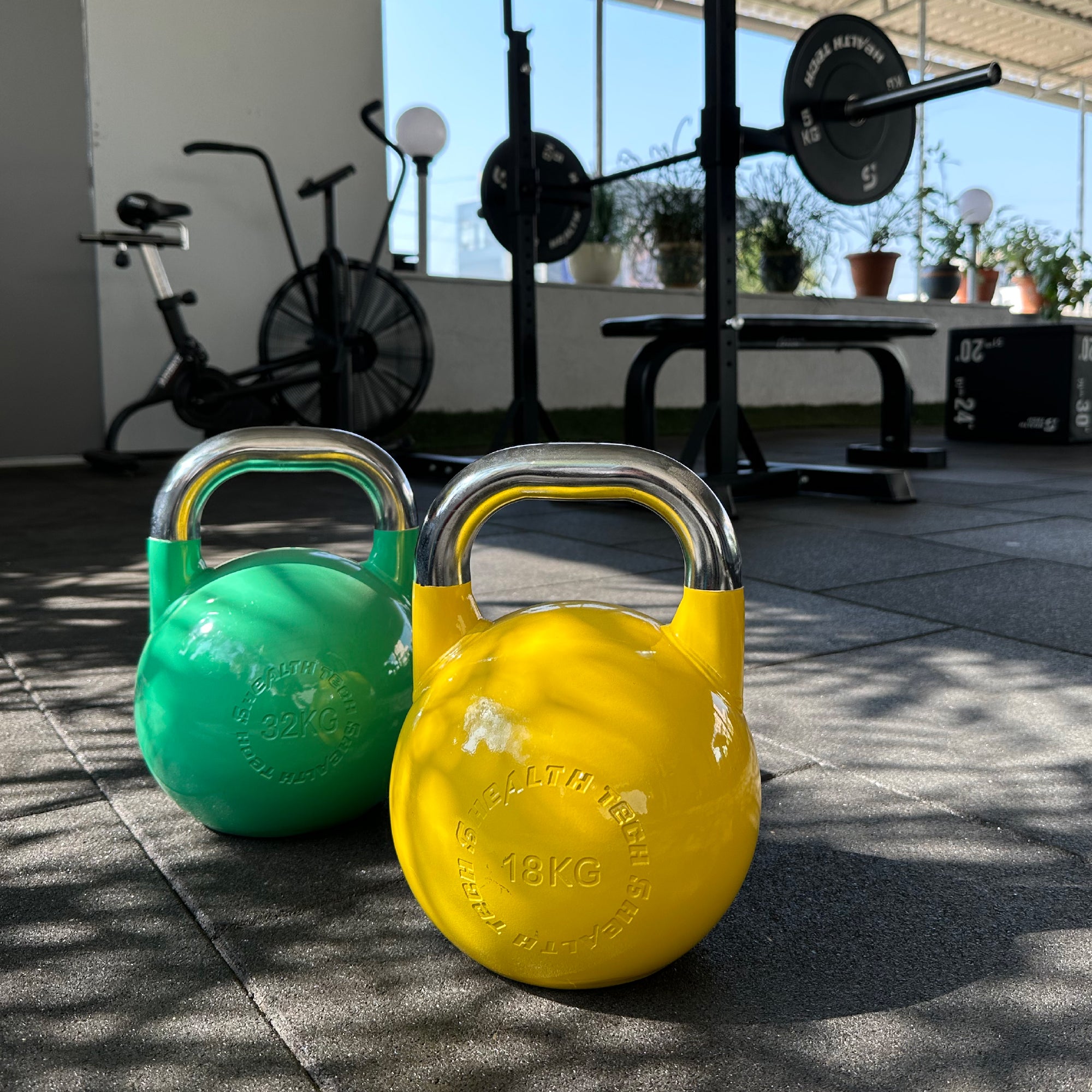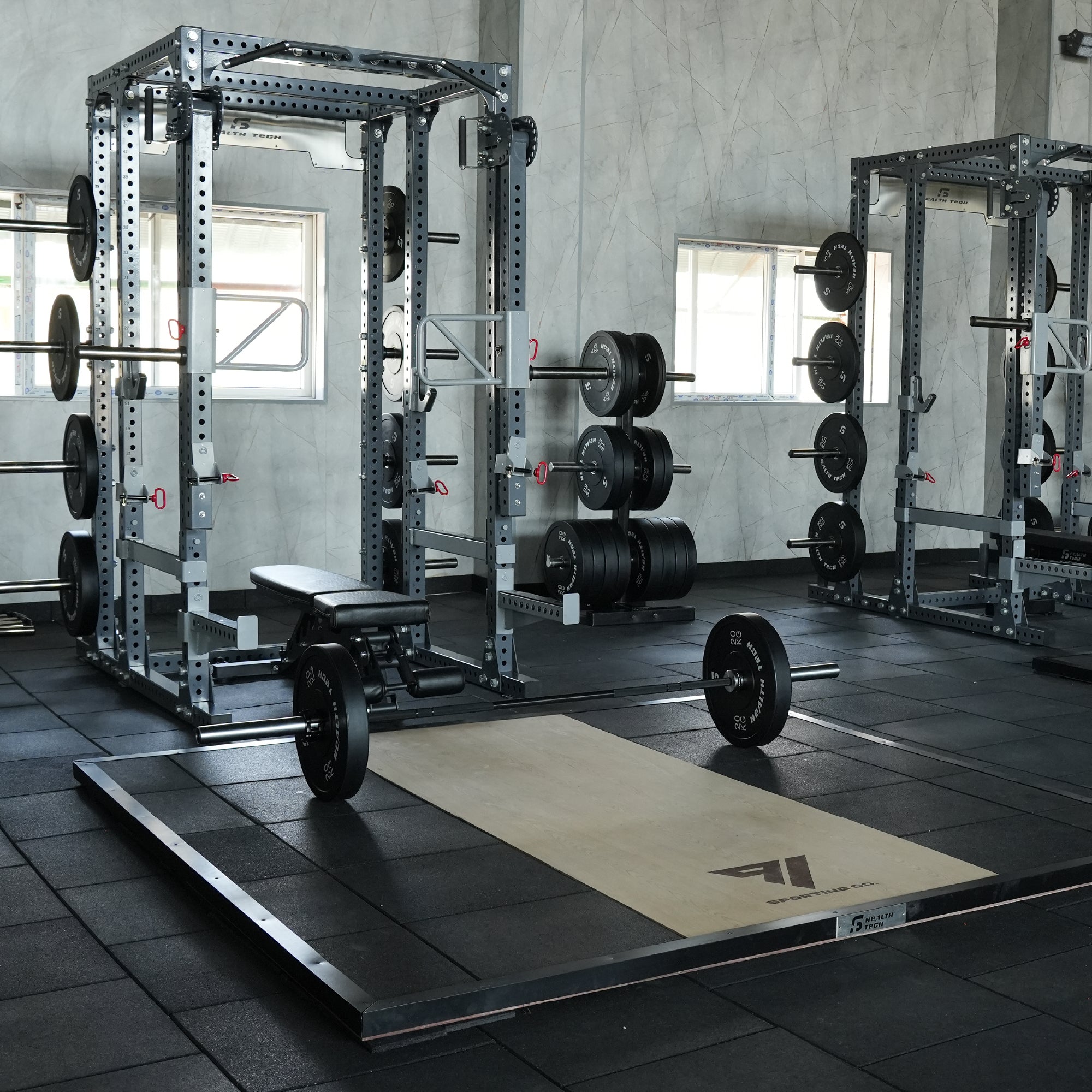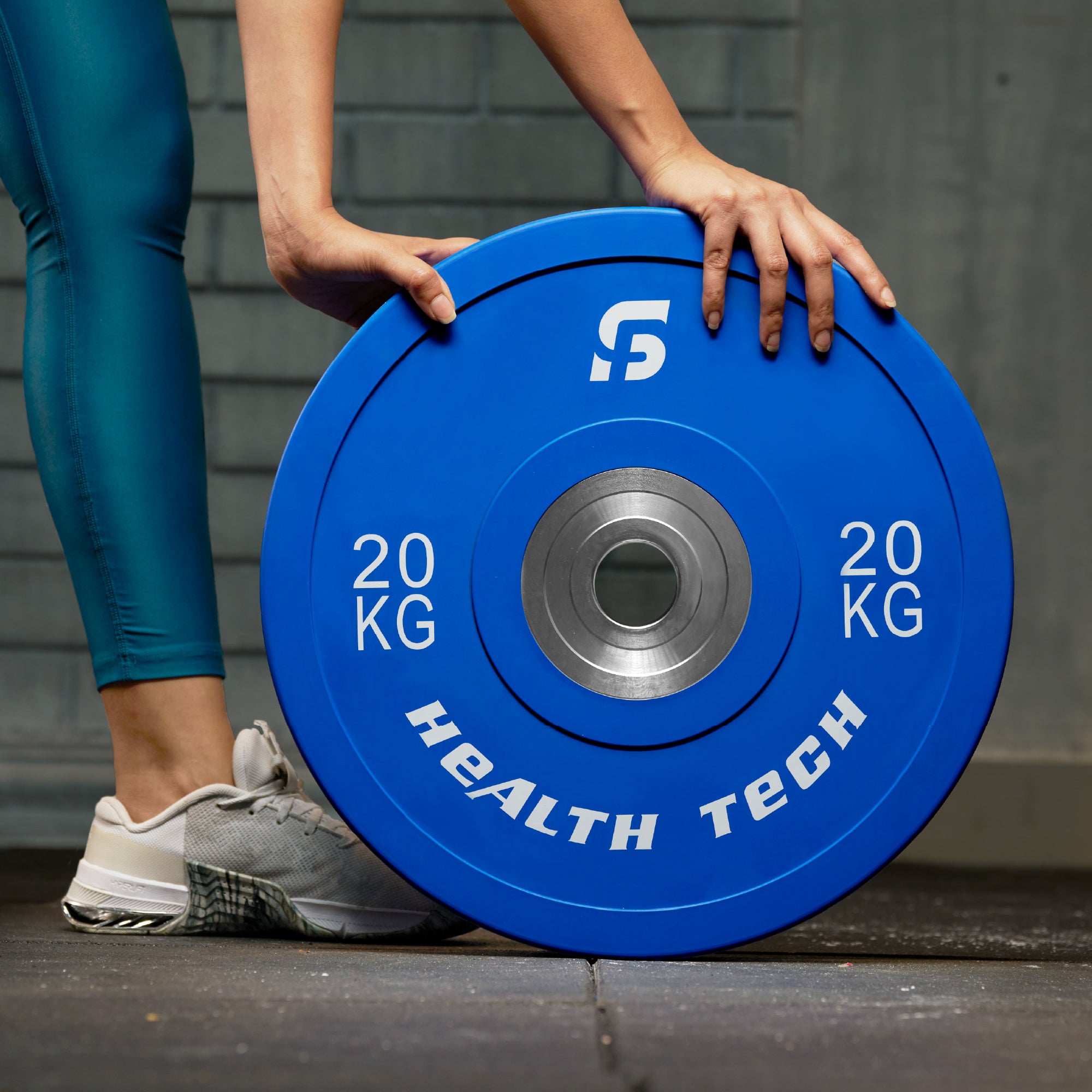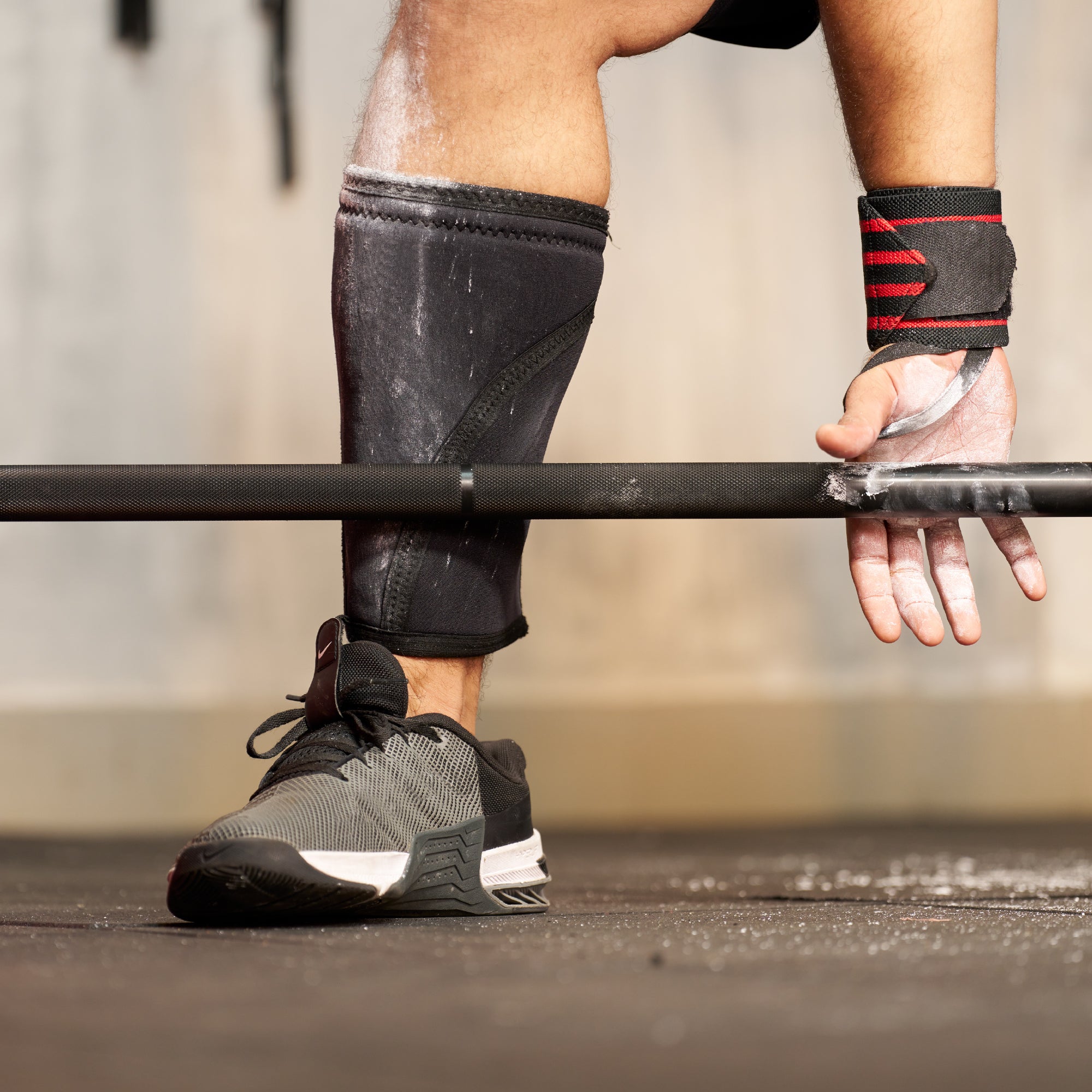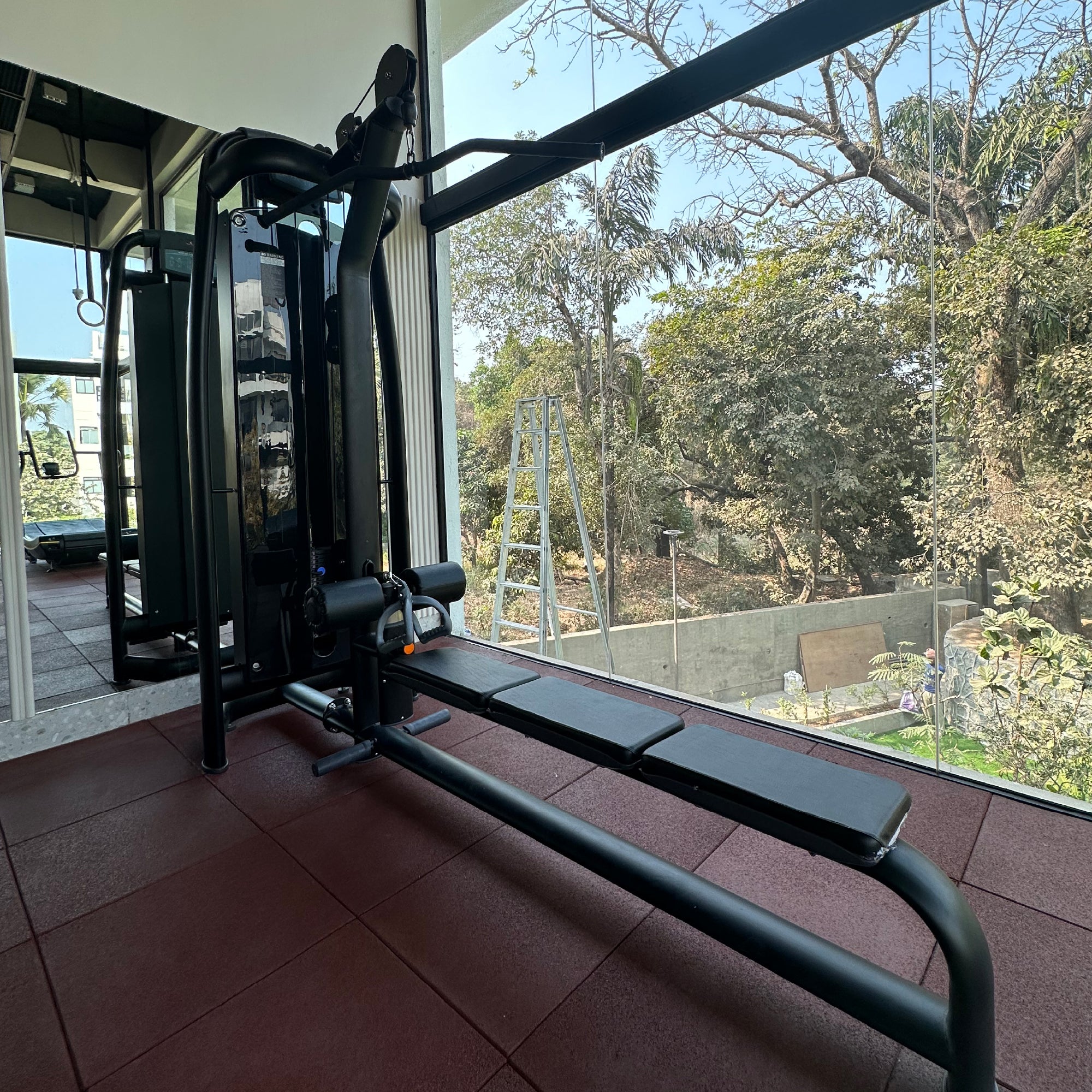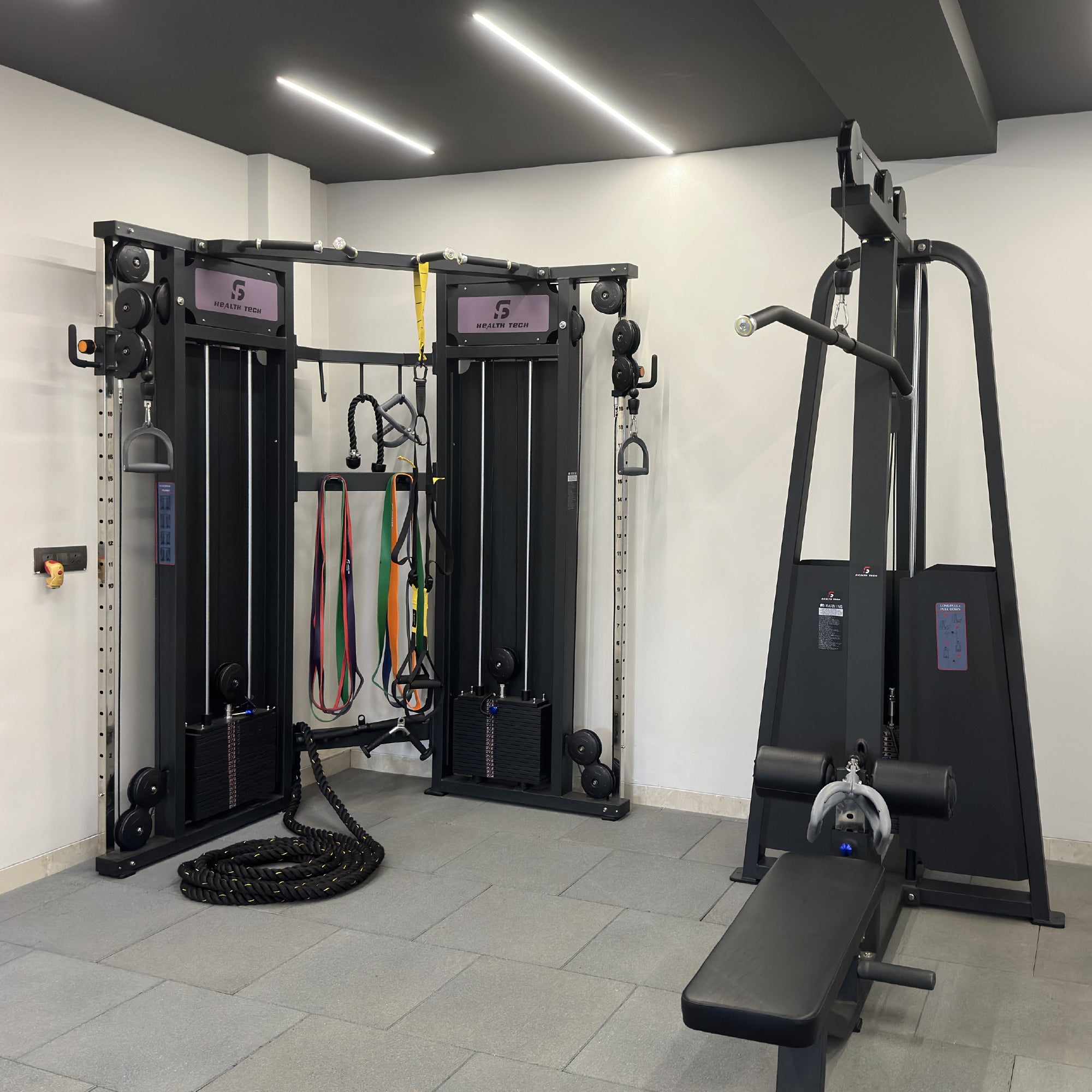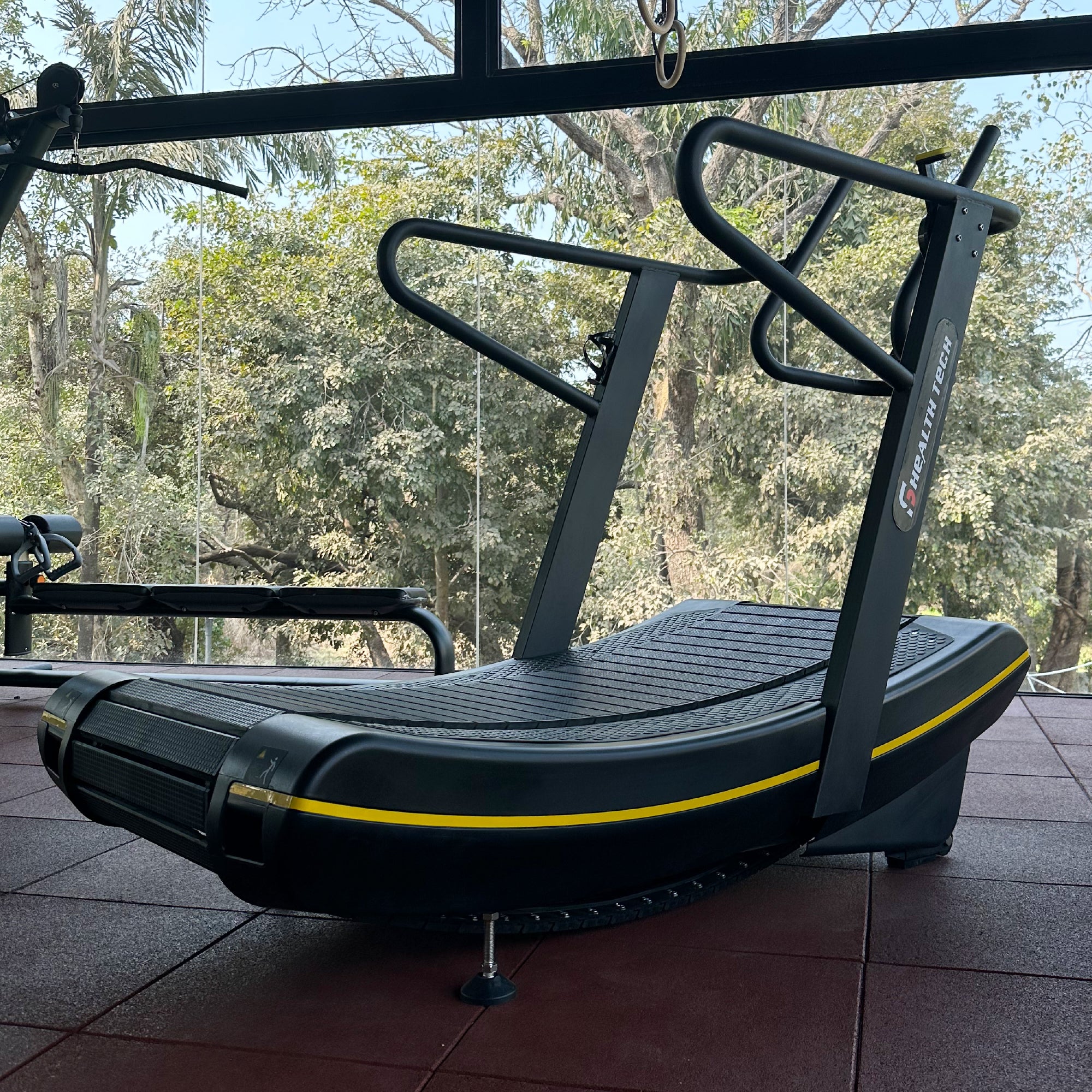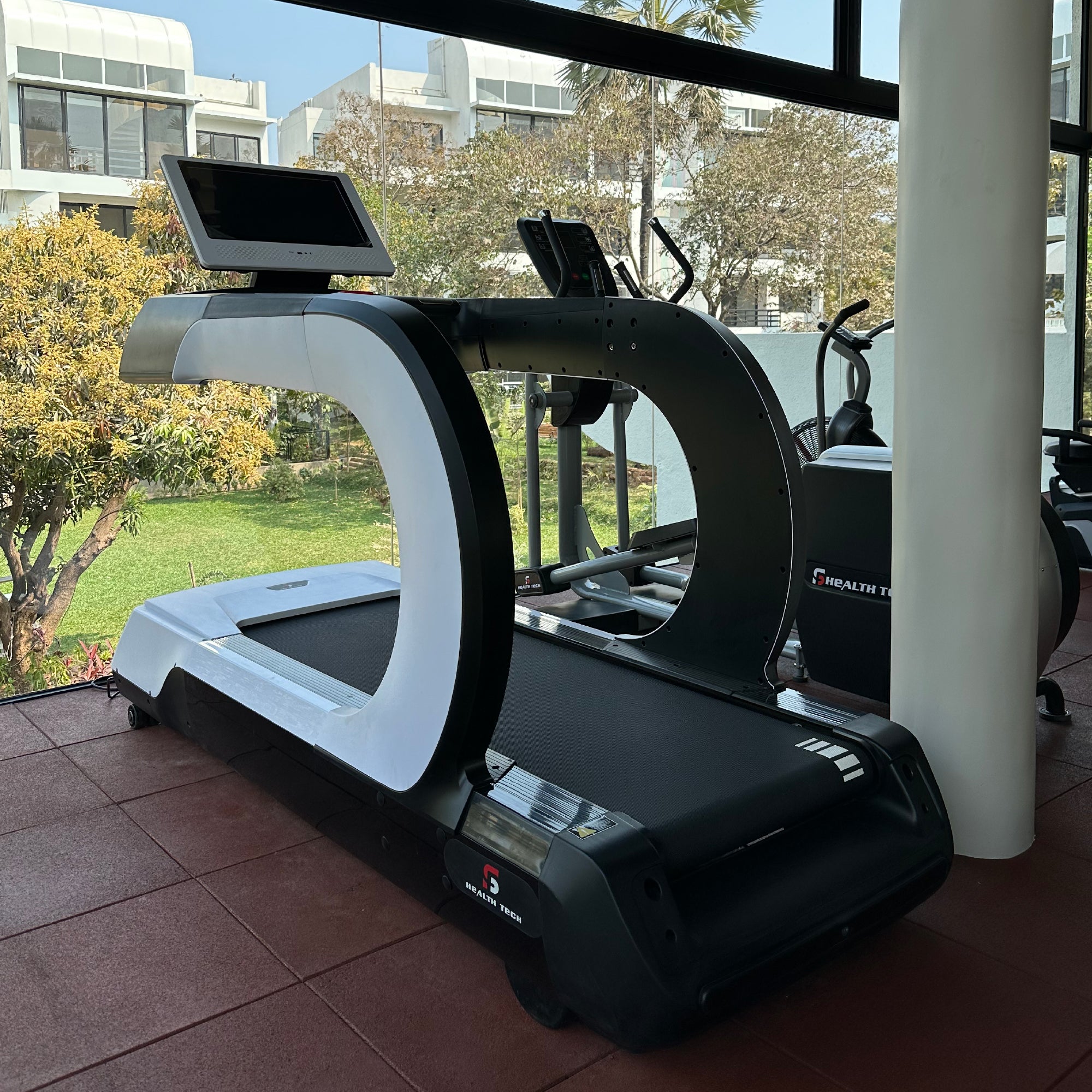A Comprehensive Guide to Powerlifting
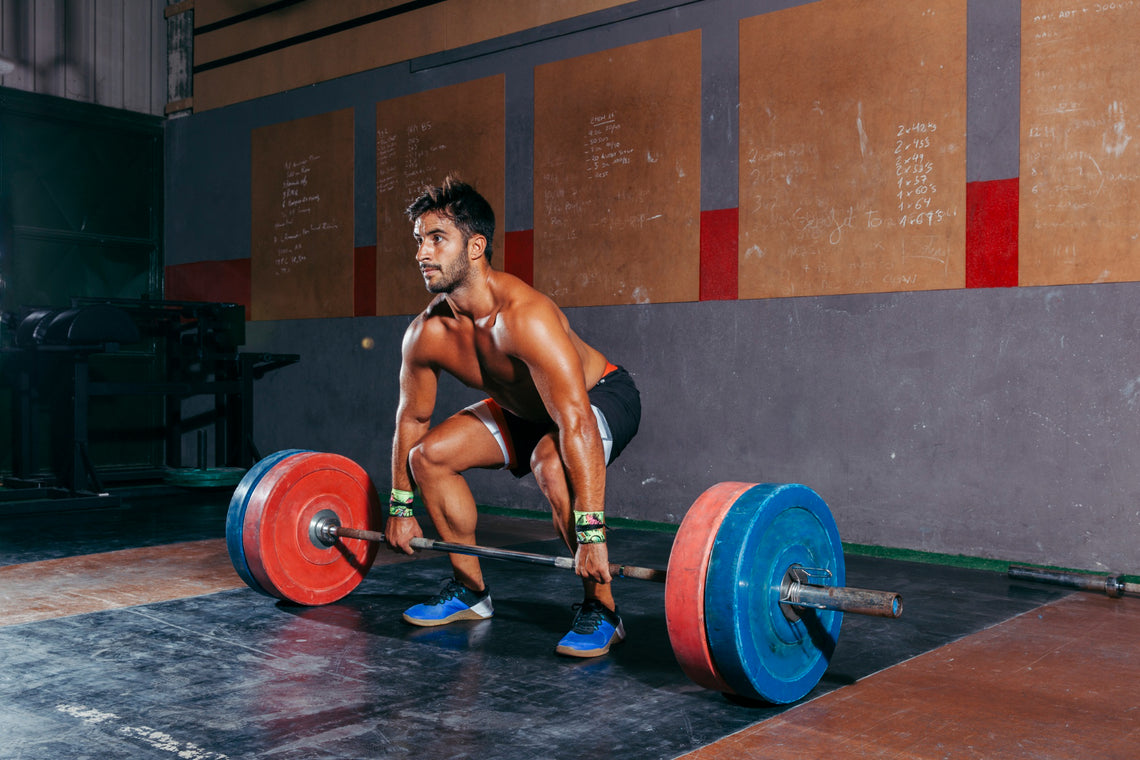
Powerlifting isn't just about lifting heavy weights; it's about pushing your body to its absolute limit. This strength sport focuses on three core lifts: the squat, bench press, and deadlift. But powerlifting's journey to becoming a recognized sport is interesting. It all started in the 1950s in the U.S. and Britain, where weightlifters felt traditional competitions favored technique over pure strength. They turned to the "odd lifts" – the squat, bench press, and deadlift – and laid the foundation for what we know today as powerlifting. This guide will explore the history of powerlifting and equip you with everything you need to know to start your own powerlifting adventure.
What Is Powerlifting?
In powerlifting, athletes aim to lift as much weight as they can in three main exercises: squat, bench press, and deadlift. Competitors are divided into groups based on factors like weight, age, and experience. There are also distinctions between "raw" and "geared" lifters, depending on whether they use supportive equipment.
Competitions usually last all day, starting with squats, then bench presses, and finishing with deadlifts. Each lifter gets three attempts at each lift, making a total of nine lifts.
Judges, typically three of them, decide if a lift is successful or not. They show their decision with red and white lights, with white meaning a good lift and red meaning a failed one. To pass, a lift needs at least two white lights.
At the end of the competition, awards go to lifters with the highest weights in squat, bench press, deadlift, and total. The total is the sum of the lifter's best lifts, and the lifter with the highest total is the strongest overall in their division.
Powerlifting Exercises
-
Barbell Back Squat
The barbell back squat is a fundamental exercise in powerlifting. It strengthens many leg muscles and builds overall lower body power. You hold the barbell on your upper back and squat down until your thighs are parallel to the ground (some lifters go even lower). By keeping your core tight, back straight, and chest up, you'll work your glutes, quads, hamstrings, and calves. This exercise helps improve leg strength and stability.
-
Barbell Bench Press
The barbell bench press is another core exercise in powerlifting. It focuses on your upper body, particularly your chest, shoulders, and triceps. You lie flat on a bench and press the barbell upwards in a controlled motion. Proper form is important here, with a flat back, engaged core, and grip slightly wider than shoulder-width. This exercise helps build upper body strength and pushing power.
-
Barbell Deadlift
When it comes to a barbell deadlift you can start by standing behind a barbell with your feet about shoulder-width apart. Your feet should be pointing forward or slightly turned out. Bend your hips back and lower your body, as if you're sitting in a chair. Hold the barbell against your legs, keeping your back straight and looking ahead.
Push your hips forward to stand up straight, lifting the barbell with your hands. Then, hinge at your hips again to lower the barbell back to the ground.
Some powerlifters use a grip where one hand faces up and the other faces down. But make sure you're not using your back muscles too much. Focus on feeling the work in your glutes and legs.
-
Pause Squat
A pause squat is like a normal squat, but you stop for a moment at the bottom. Usually, you pause there for two or three seconds.
Adding this pause can really help improve your regular squat in three important ways:
- It makes you feel more confident in the bottom position.
- It makes your muscles stronger in that bottom position.
- It helps you get used to squatting to the right depth.
When you're squatting, sometimes it's scary to think you might get stuck at the bottom. But doing pause squats helps you overcome that fear and feel more sure of yourself.
If you're struggling with squat technique, depth, or feeling confident, try doing pause squats. Use a bit less weight than usual, and do fewer reps. It can make a big difference!
-
Front Squats
If you notice your back squat looking more like a "good morning" exercise, it might mean your quadriceps (the muscles in the front of your thighs) need some strengthening. Front squats are fantastic for this.
Not only do front squats make your quads stronger, but they also help you get stronger from the bottom position of the squat.
-
Leg Press
Even though squats are super important for leg day, you can add other exercises to boost your performance.
The leg press is a classic move for making your legs and glutes bigger and stronger. Some powerlifters even believe it helps with squats and gives them a better start in deadlifts.
Don't worry about lifting super heavy weights. Focus on using a full range of motion to get the most muscle growth possible.
-
The Bulgarian Split Squat
Most exercises in powerlifting use both legs at once, which is called bilateral exercises. But by doing a Bulgarian split squat, you work one leg at a time. This helps make sure both sides of your body get equally strong and muscular.
Plus, the Bulgarian split squat is really good for your quads and glutes.
-
Leg Extension
Not all exercises have to use lots of muscles at once. The leg extension focuses just on your quadriceps, which are super important for squatting. And since you do it on a machine, you don't have to worry about balance. You can just focus on making your muscles work hard.
-
Bench and Overhead Press
Bench press and overhead press are key exercises in powerlifting, building upper body pushing power. The bench press, done lying flat, targets your chest, triceps, and shoulders. It lets you lift the most weight, making it a great way to measure your upper body push strength. The overhead press, done standing or seated, involves pushing a weight from shoulder level all the way up overhead.
This exercise works your shoulders more and challenges your core stability, requiring good form to keep your shoulders healthy. While you typically lift less weight with the overhead press than the bench press, it's still important for building overall upper body strength and stability, which are crucial for success in the three powerlifting lifts (squat, bench press, and deadlift).
-
Deadlift
The deadlift is the king of pulling exercises in powerlifting. It challenges your entire posterior chain, including your lower back, hamstrings, and glutes. Unlike the squat and bench press, the deadlift involves lifting the weight off the ground to a standing position. This full-body movement tests grip strength, core stability, and overall pulling power.
Deadlifts can be done with a conventional stance (feet hip-width apart) or a sumo stance (a wider stance with toes pointed outward). While it may not be the most weight-loaded lift in powerlifting, mastering proper deadlift form is essential to avoid injury and maximize overall pulling strength for success in the sport.
What Powerlifting Equipment Will You Need?
-
Flat Shoes
At powerlifting meets, you'll often notice many lifters opting for flat shoes like Chuck Taylor for squats and deadlifts. Unlike shoes with raised heels, flat shoes allow for better weight distribution through the entire foot, helping in the technique of "spreading the floor apart" effectively. Additionally, the grippy soles of Chuck Taylors offer enhanced traction, reducing the risk of slipping during lifts.
However, for the bench press, flat shoes may not offer the same advantages, especially for shorter lifters who may prefer sneakers with a raised heel to maximize leg drive throughout the lift.
-
Use of High Socks
Experienced dead lifters are familiar with the common occurrence of bloody shins during heavy lifts. To address this issue, it's advisable to bring long socks to competitions and wear them specifically during the deadlift portion. Many federations have already mandated this practice due to hygiene and safety concerns. Additionally, considering the likelihood of encountering a fellow lifter with bleeding shins, wearing high socks ensures that you can focus on your performance without worrying about potential contamination from blood on the barbell.
-
Wrist Wraps
Primarily used during bench presses, wrist wraps are also favored by many lifters during squats. Their purpose is to provide stabilization to the wrist, a joint prone to instability, thereby enabling lifters to manage heavier weights with greater safety and comfort.
-
Singlets
While singlets may seem trivial, they are mandatory attire for competitive powerlifting. They may not directly enhance strength, but they are required in every federation. For those considering competition, purchasing a singlet online is advisable to ensure compliance with regulations.
-
Lifting Belts
There's been ongoing discussion surrounding the use of lifting belts in the fitness community.
Questions such as "Are they safe?" "Do they work?" and "Will they slow progress?" are common.
Our perspective is that when used properly, lifting belts can indeed improve strength and performance while reducing the risk of injury. However, misuse can lead to dependency and neglect of other important aspects of training. It's worth noting that many lifters find they can lift more weight with a belt. For those in powerlifting competitions, it's advisable to invest in a good belt, use it correctly, and wear it during competition.
Benefits of Powerlifting
Powerlifting offers several benefits like:
-
Improving Bone Density
Using heavy weights with low reps is effective for boosting maximal strength, which includes increasing bone and connective tissue density.
Studies have shown that lifting close to your maximum capacity during training gives the best boost to bone and tissue growth, compared with training at a lower intensity.
-
Enhancing Functional Strength
Powerlifting movements focus on building maximal strength in major muscle groups, which can translate into better functional strength for everyday tasks.
Exercises like heavy squats and deadlifts help develop the strength and core stability needed for safe bending and lifting, especially as people age.
-
Performance-oriented Training Goals
While improving health or appearance may be your main reason for training, setting performance-based fitness goals can help keep you motivated and focused on long-term objectives, like overall health improvement.
Powerlifting emphasizes progress in how much weight you're lifting, giving a tangible sense of achievement as you see your strength levels increase over time.
Feeling the satisfaction of getting stronger week by week or month by month is rewarding and adds variety to your workout routine.
Not everyone is motivated by seeing the numbers on the weights go up, but if you enjoy the feeling of getting better at something measurable, powerlifting could be a great fit for you.
How to Start Powerlifting
Starting your journey in powerlifting is more accessible than ever. With a wealth of online resources available, individuals can easily dive into strength training and work towards becoming competitive powerlifters. Through search engines and social media, you can find various gyms, coaches, and training programs to kick off your powerlifting adventure.
Choosing the right gym is important when starting out in powerlifting. You'll want to find a gym that supports powerlifting-style training, as not all places are equipped or open to heavy lifting like deadlifts. Opting for the wrong gym might mean dealing with damaged equipment and stunted progress.
Next, you'll need to decide whether to go it alone or hire a coach. While having a coach can be beneficial, it also means a monthly expense. For some beginners, though, going solo can be the best route. Yes, it might be tough at first, but tackling challenges on your own can lead to valuable learning experiences. Plus, it saves you money and helps you build your knowledge and skills in strength training, possibly even setting you up for a future career as a coach.
Finding a Competition
-
Selecting a Powerlifting Federation
Choosing the right powerlifting federation can feel overwhelming, especially with the multitude of opinions circulating online. Discussions often become heated, leaving individuals feeling uncertain about which federation to align with.
-
Choosing the Right Weight Class
Deciding on a weight class shouldn't consume your thoughts excessively. Unless you're aiming for a world record, extreme weight-cutting may not be necessary. While improving your diet is beneficial, extreme dehydration for weight loss should be avoided.
-
Geared vs. Raw Lifting
The debate between geared and raw lifting can get pretty intense in the powerlifting community. Everyone seems to have a strong opinion, but it ultimately comes down to what works best for you and your training style.
-
Registration Process
Once you've made decisions regarding federation, competition, and weight class, registering for the event is straightforward. Visit the federation's website, locate the desired competition from their list of upcoming events, and complete the application form. Initial registration typically involves paying the competition entry and membership fees. Once registered, your membership remains active for the year, eliminating the need for annual renewal.
Preparing For Competition—Training
Contrary to what some may think, gearing up for a powerlifting competition doesn’t mean you have to drastically change your training routine. If you've been steadily improving with your current lifting program, there might not be a need for big changes, if any at all. However, as the competition date approaches, there are a few things to consider.
-
Establishing Your Strength Levels
It's important to find out your one-repetition maximum (1RM) in the squat, bench press, and/or deadlift, especially if you haven’t tested it recently. This helps track your progress during training and set suitable opening attempts for each lift at the competition. It's best to test your 1RM for each lift separately over a week or two instead of all in one day.
-
Setting Opening Attempts
Once you know your current 1RM figures, it's time to set your opening attempts for the squat, bench press, and deadlift. Many lifters find this step tricky, often starting too light or too heavy.
Here's a simple method you can follow:
-
First Attempt:
Your opener should be relatively easy to lift. Ideally, it should feel manageable, like something you could do even if you woke up in the middle of the night. Typically, aim for 87–93 percent of your 1RM. Stronger lifters should go for the lower end of this range, while weaker lifters may opt for the higher end.
-
Second Attempt:
If you successfully complete your opener, aim for a modest eight to ten pounds of personal record with your second attempt. It’s important not to try for a big jump in weight. Even a small PR is a win. If you miss your first attempt, you have the option to either repeat it or move to your second attempt based on how you're feeling.
-
Third Attempt:
If you hit a eight to ten pound PR on your second attempt, the third attempt is your chance to push yourself further. While it’s important to listen to your body and assess the difficulty of your previous lift, aim to challenge yourself and see what you can achieve.
-
First Attempt:
-
Plan Your Openers
As you approach competition day, aim to set your opening attempts about two to three weeks beforehand. It's best not to push your limits with all three lifts on the same day. Take your time and gradually work up to your openers over one to two weeks, allowing for a smooth and steady process.
-
One Week Before—Start Your Deload
Since powerlifting competitions are often held on weekends, begin your deload phase on the Saturday or Sunday preceding the event. This gives you approximately six to seven days to unwind, recover, and mentally prepare for the competition.
Remember, deloading doesn't mean taking a complete break. Stay active with light gym sessions, foam rolling, mobility drills, and easy exercises like glute ham raises, chin-ups, push-ups, cable pull-throughs, and core work. Just keep it light and avoid pushing yourself too hard to ensure you're fully ready for the competition.
Frequently Asked Questions (FAQs)
-
Powerlifting vs. Bodybuilding: What's the difference?
Powerlifting is about lifting the most weight possible in three lifts: squat, bench press, and deadlift. Bodybuilding focuses on sculpting muscles and achieving low body fat.
-
Is powerlifting safe for beginners?
Yes, with proper instruction. It's recommended to build a foundation of strength and technique before aiming for powerlifting competitions.
-
Powerlifting vs. Olympic Weightlifting: What's the difference?
Powerlifting focuses on pure strength in three lifts. Olympic weightlifting combines explosive power and strength in two lifts (snatch and clean and jerk). Powerlifting movements are simpler, while Olympic lifts demand more technical skill.
-
What is Powerlifting vs Weightlifting?
Both are strength sports but with different goals:
-
Powerlifting:
Tests pure strength in three lifts: squat, bench press, and deadlift.
-
Weightlifting (Olympic Weightlifting):
Combines strength and explosive power in two lifts: snatch (one motion overhead) and clean and jerk (two motions overhead).
-
Powerlifting:


